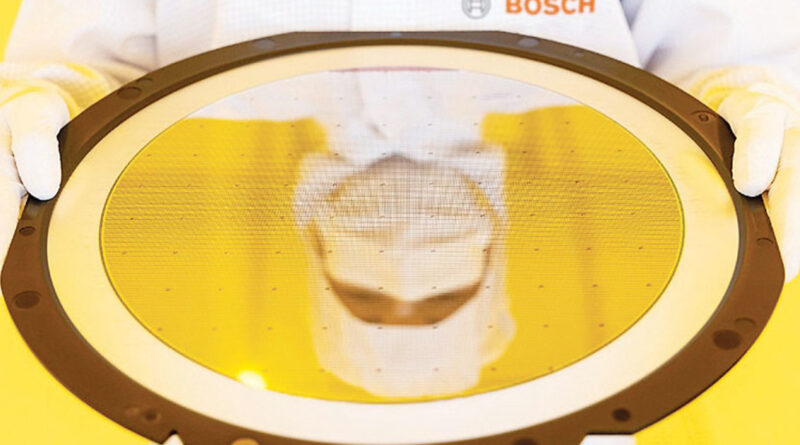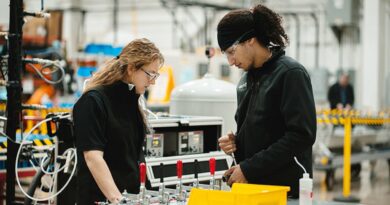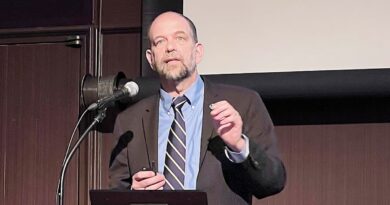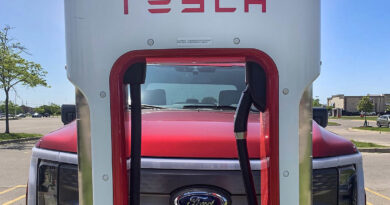New Bosch unit targeting software, chips
Bosch’s reorganization of its biggest business unit, Mobility Solutions, into Bosch Mobility will help the mega-supplier prepare for a future in which software, computers and semiconductors are just as important as engines, transmissions and brakes.
Markus Heyn, who will lead Bosch Mobility when the reorganization goes into effect on Jan. 1, 2024, said that while business is good at Mobility Solutions, it is crucial to create better processes.
“We are trying to reshuffle big parts of our mobility business sector into a setting that is more suitable for the businesses we want to pursue in the future,” he told Automotive News Europe at Bosch’s annual news conference this month.
The reorganization will result in seven divisions under Bosch Mobility, covering electric components from seat motors to e-axles; vehicle control such as steering and traction; internal combustion and hydrogen powertrains; computing for self-driving and parking; ECUs and semiconductors; software, especially middleware; aftermarket parts; and electric bicycles.
The vision for the reorganized unit is to reach automotive revenue of about $86 billion by 2029, a substantial increase from $56.6 billion last year. Bosch is ranked No. 1 on the Automotive News list of the top global auto suppliers, with worldwide sales to automakers of $49.14 billion in 2021.
In addition to the seven vertical divisions, there will be three horizontal domains: software, computers and semiconductors, which are crucial for nearly every complex component, Heyn said.
“All of the vertical divisions, and thus all the solutions that we develop and provide to customers, will have the same technical foundation and framework and use the same processes and tools,” he said.
One example of how the revamped business unit might work is a new vehicle control system that utilizes elements of braking, steering and electronics.
“Our customers are thrilled about it because this integrated functionality of steering, braking and powertrain provides maneuvering and motion control that is simply beyond what is available today,” Heyn said.
Bosch is now organized into silos that separately developed braking, steering and powertrain, each with its own processes and technology.
“We need a different setup to come up with this sort of solution and do it seamlessly and efficiently for our customers,” he said.
Heyn said the crucial part of the new organizational structure is that it will lead to better collaboration across the divisions, with a new management board that can ensure divisions work together horizontally and vertically.
“In the past, each division had its own individual targets, with few interdependencies with other divisions,” he said. “Whenever we had subjects that required input and dedicated resources from more than one division, it was sometimes a challenge to get all the departments behind it, especially if something was not considered to be part of one division’s business.”
Heyn will lead a redrawn five-member board that will run Bosch Mobility and be responsible for all divisions. The newly established board will “enable us to do a better orchestrated steering job when it comes to market and technology shifts,” he said.
Heyn ruled out a spinoff of all or part of Bosch’s automotive activities, unlike Continental’s Vitesco powertrain unit. “There is no intent to do a spinoff,” he said, acknowledging that “rumors” had been spread suggesting that.
The growth prospects for Bosch Mobility largely revolve around software, which the supplier says will be a $215 billion market by 2030. He declined to cite specific Bosch figures because it’s not yet clear how to break out revenue directly from software.
Compensation models for software are still evolving, he said.
“Today, there are a multitude of monetization vehicles that are being pursued, because our industry is not yet used to software-only business models,” Heyn said. For example, how should a supplier be paid separately for updates to software that is part of a component system?
“The software portion of our business is certainly on the rise, but what the business model will look like, and which ones will be dominant, remains to be seen and will depend on market requirements,” he said.
Another area where Bosch will look to grow is in semiconductors, where a shortage of automotive-grade chips that started in late 2020 is only now starting to ease. The mobility electronics unit will oversee both ECUs and in-house semiconductor activities, which are set to grow with Bosch’s recent acquisition of TSI, a California company that makes silicon carbide chips, seen as crucial for EV development.
Bosch plans to spend $1.5 billion to upgrade TSI’s production lines in California.
Bosch also has been the object of speculation that it will partner with Taiwan’s TSMC in a European semiconductor factory. A Bosch spokesman said the company would not comment on “market rumors.”
“It’s relatively clear that with the market requirements we see today that the automotive industry will need more electronics, which in turn will require a lot more semiconductors,” he said. “It’s only natural that we are seeking to engage more in this area, as we’re doing with our [TSI] investment in Roseville, Calif.”
Source : Autonews.com




